1. Overview of Vietnam Airports
Vietnam has built a comprehensive airport network that serves as an important gateway for tourism, trade and regional connectivity. As of 2025, Vietnam is operating 22 commercial airports, including 11 international and 11 domestic airports. According to the Civil Aviation Authority of Vietnam, in the first 8 months of 2025, air cargo transport nationwide served nearly 83 million passengers (arrivals and departures), an increase of more than 10% over the same period in 2024. Of which, international passengers reached nearly 31 million (up 13%), and domestic passengers reached more than 52 million (up 8%).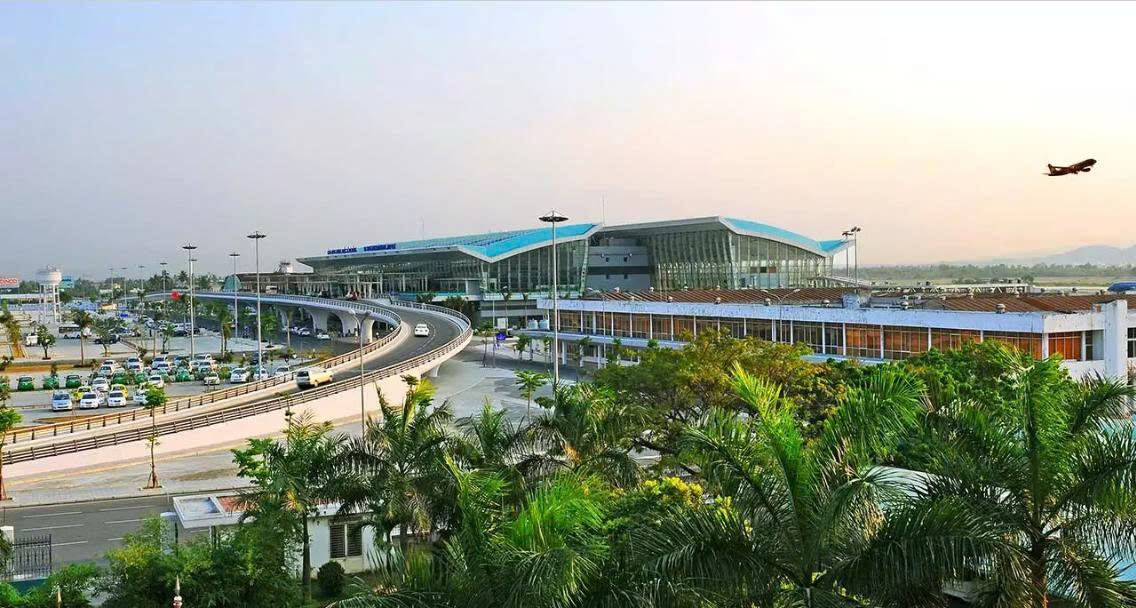 What makes the Vietnamese aviation network unique is its strategic north central south distribution. Major international airports such as Noi Bai (Hanoi), Da Nang, and Tan Son Nhat (Ho Chi Minh City) form the backbone of this system, serving as the main gateways for international arrivals. Meanwhile, secondary international airports like Cam Ranh, Phu Quoc, and Van Don support tourism-driven regions, offering direct links to key holiday destinations.
Vietnam’s airports are also undergoing rapid modernization and expansion. The highly anticipated Long Thanh International Airport, currently under construction near Ho Chi Minh City, is expected to become Vietnam’s largest airport and a major aviation hub in Southeast Asia. Parallel investments are also underway at Noi Bai, Da Nang and Cam Ranh to increase capacity, upgrade facilities and improve the passenger experience.
For travelers, the system offers greater flexibility and convenience. With Vietnam airport maps widely distributed, travelers can easily plan their journey: fly directly to Hanoi to explore the North, to Da Nang to explore the Central heritage sites of Hoi An and Hue, or land in Phu Quoc for a beach holiday. The continuous improvement of Vietnam airports ensures a more convenient travel experience, making the country increasingly attractive to travelers.
What makes the Vietnamese aviation network unique is its strategic north central south distribution. Major international airports such as Noi Bai (Hanoi), Da Nang, and Tan Son Nhat (Ho Chi Minh City) form the backbone of this system, serving as the main gateways for international arrivals. Meanwhile, secondary international airports like Cam Ranh, Phu Quoc, and Van Don support tourism-driven regions, offering direct links to key holiday destinations.
Vietnam’s airports are also undergoing rapid modernization and expansion. The highly anticipated Long Thanh International Airport, currently under construction near Ho Chi Minh City, is expected to become Vietnam’s largest airport and a major aviation hub in Southeast Asia. Parallel investments are also underway at Noi Bai, Da Nang and Cam Ranh to increase capacity, upgrade facilities and improve the passenger experience.
For travelers, the system offers greater flexibility and convenience. With Vietnam airport maps widely distributed, travelers can easily plan their journey: fly directly to Hanoi to explore the North, to Da Nang to explore the Central heritage sites of Hoi An and Hue, or land in Phu Quoc for a beach holiday. The continuous improvement of Vietnam airports ensures a more convenient travel experience, making the country increasingly attractive to travelers.
2. Vietnam Airport Map
 Having a good understanding of Vietnam airports map is essential for any traveler planning a trip, as Vietnam’s airport system is strategically distributed across three key regions: North, Central and South. This distribution not only ensures more convenient domestic connections but also helps international visitors easily access popular tourist destinations.
Having a good understanding of Vietnam airports map is essential for any traveler planning a trip, as Vietnam’s airport system is strategically distributed across three key regions: North, Central and South. This distribution not only ensures more convenient domestic connections but also helps international visitors easily access popular tourist destinations.
2.1. Northern Vietnam Airports
Northern Vietnam is home to iconic destinations such as Hanoi, Ha Long Bay, and Sapa. To support tourism and trade, the region is served by several important Vietnam airports, all strategically placed and well connected through domestic and international routes. On the Vietnam airport map, these gateways form a strong transportation network for tourists. Noi Bai International Airport (HAN – Hanoi): The main hub in the North and the second busiest airport in Vietnam, Noi Bai handles over 29 million passengers each year. Located just 30 km from Hanoi, the airport has domestic flights connecting Da Nang, Ho Chi Minh City and Phu Quoc, along with direct international flights to Europe, Asia and the Middle East.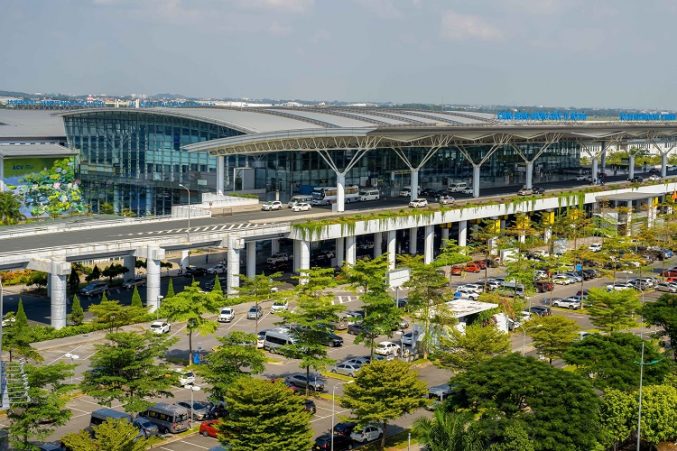 Cat Bi International Airport (HPH – Hai Phong): Located in Hai Phong city, about 120 km from Hanoi, Cat Bi serves 2.5 – 3 million passengers yearly and plays a supporting role to Noi Bai. On the Vietnam airport map, it is a time-saving option for travelers heading to Cat Ba Island, Ha Long Bay, or Hai Phong. The airport provides domestic flights to Vietnam’s major cities and international routes to China, South Korea, and Thailand.
Cat Bi International Airport (HPH – Hai Phong): Located in Hai Phong city, about 120 km from Hanoi, Cat Bi serves 2.5 – 3 million passengers yearly and plays a supporting role to Noi Bai. On the Vietnam airport map, it is a time-saving option for travelers heading to Cat Ba Island, Ha Long Bay, or Hai Phong. The airport provides domestic flights to Vietnam’s major cities and international routes to China, South Korea, and Thailand.
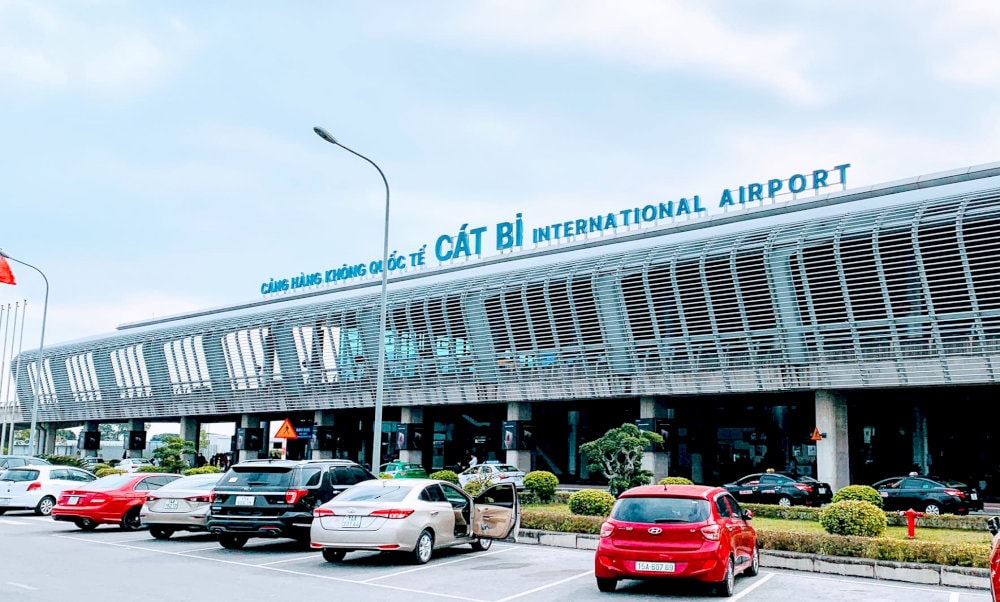 Van Don International Airport (VDO – Quang Ninh): Opened in 2018 as Vietnam’s first private international airport, Van Don is just 50 km from Ha Long Bay. Built to boost Quang Ninh’s tourism, it is the closest Vietnam airport for tourists visiting Ha Long Bay. With flights from China, Korea and Japan modern facilities, and shuttle buses, Van Don is a convenient entry point to northern heritage destinations.
Van Don International Airport (VDO – Quang Ninh): Opened in 2018 as Vietnam’s first private international airport, Van Don is just 50 km from Ha Long Bay. Built to boost Quang Ninh’s tourism, it is the closest Vietnam airport for tourists visiting Ha Long Bay. With flights from China, Korea and Japan modern facilities, and shuttle buses, Van Don is a convenient entry point to northern heritage destinations.
 Dien Bien Phu Airport (DIN – Dien Bien): A small domestic airport about 500 km from Hanoi, suitable only for short haul flights. Though less prominent on the Vietnam airport map, it is vital for cultural tourism as it connects visitors to the historic Dien Bien Phu battlefield. While not a major hub, this Vietnam airport for tourists supports adventure and niche travel in the remote Northwest.
Dien Bien Phu Airport (DIN – Dien Bien): A small domestic airport about 500 km from Hanoi, suitable only for short haul flights. Though less prominent on the Vietnam airport map, it is vital for cultural tourism as it connects visitors to the historic Dien Bien Phu battlefield. While not a major hub, this Vietnam airport for tourists supports adventure and niche travel in the remote Northwest.
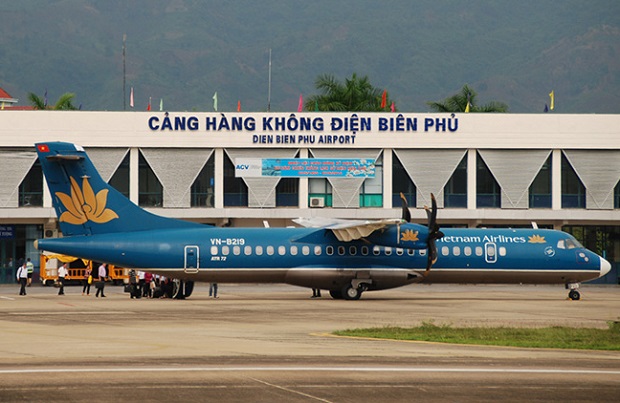
2.2. Central Vietnam Airport
Central Vietnam is home to many of the country’s most beautiful beaches and cultural relics, and its airport network plays an important role in welcoming millions of domestic and international tourists each year. On the Vietnam airport map, the central region has many key airports. These airports play an essential role for tourists planning to explore Da Nang, Hue, Hoi An and the highlands. Da Nang International Airport (DAD) is the main hub of the region and one of the busiest airports in Vietnam, with direct connections to Hoi An, Hue and international destinations such as South Korea, Japan and Thailand. Thanks to its modern facilities, the airport is often considered the most convenient airport in Vietnam for tourists wishing to visit famous places in the Central region.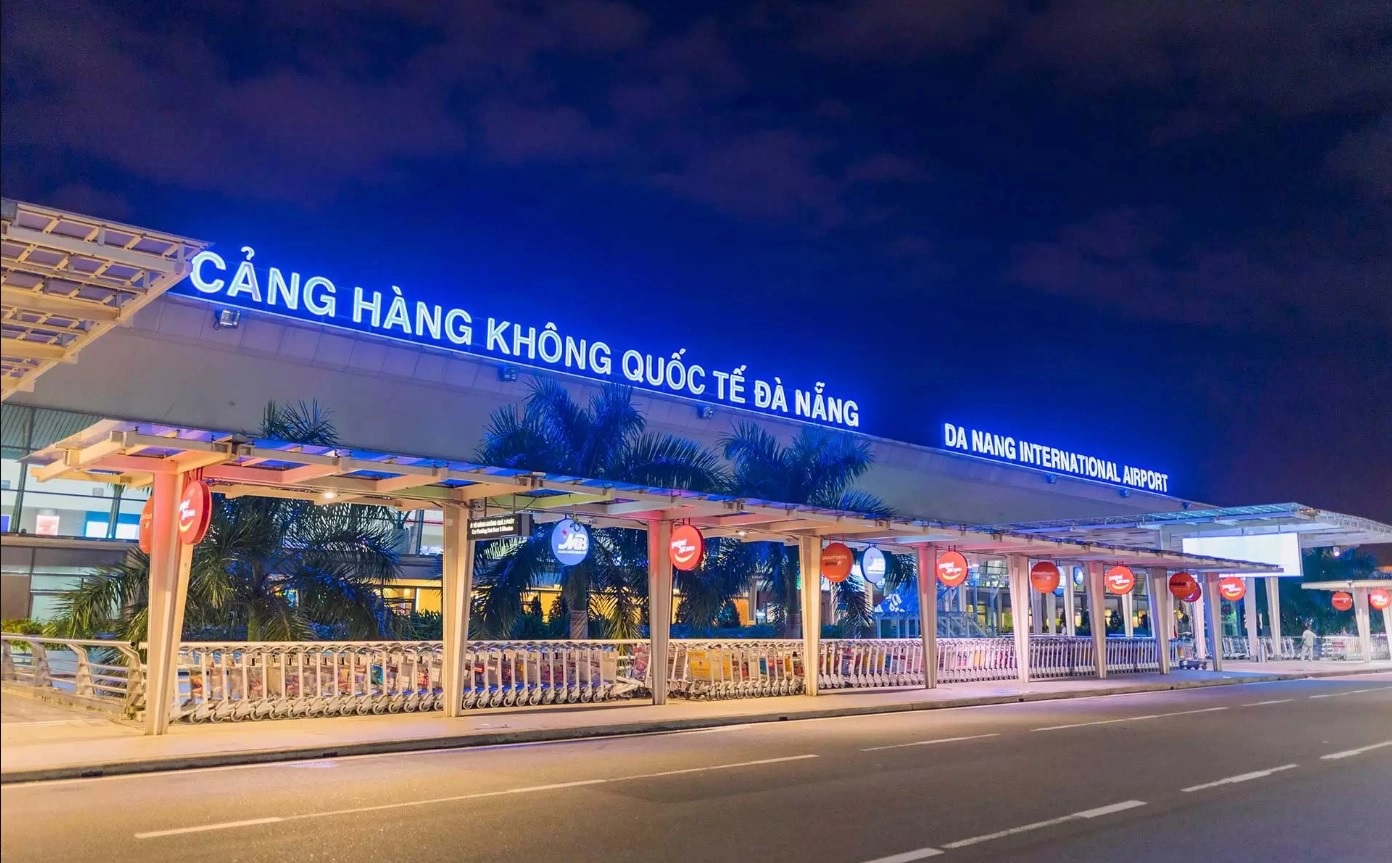 Phu Bai International Airport (HUI) serves Hue, located just 15 km from the city center. Though smaller than Da Nang, it connects with Hanoi and Ho Chi Minh City and is being expanded to handle more international flights.
Phu Bai International Airport (HUI) serves Hue, located just 15 km from the city center. Though smaller than Da Nang, it connects with Hanoi and Ho Chi Minh City and is being expanded to handle more international flights.
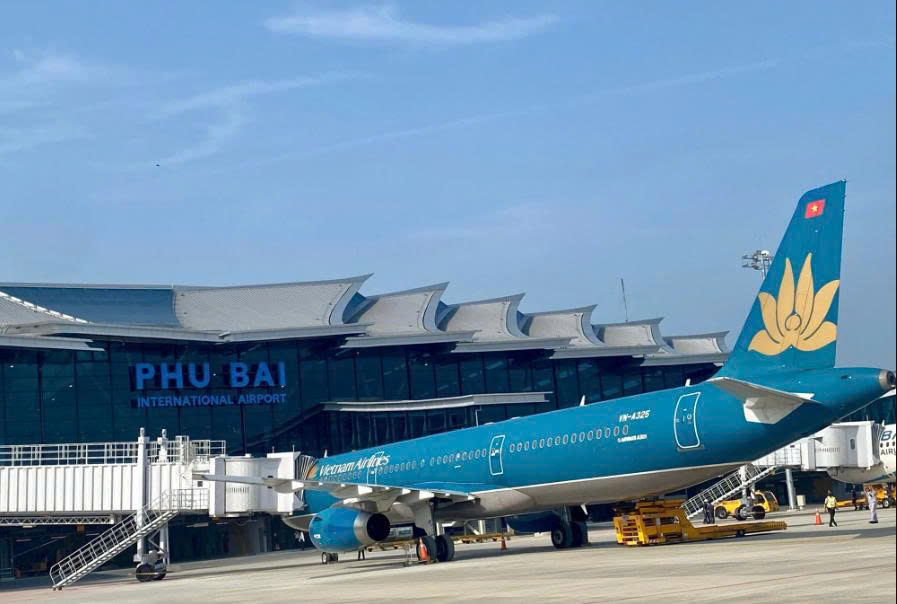 Chu Lai Airport (VCL) in Quang Nam mainly serves domestic flights but has great potential for future development, serving as a secondary gateway to the central coastal region.
Chu Lai Airport (VCL) in Quang Nam mainly serves domestic flights but has great potential for future development, serving as a secondary gateway to the central coastal region.
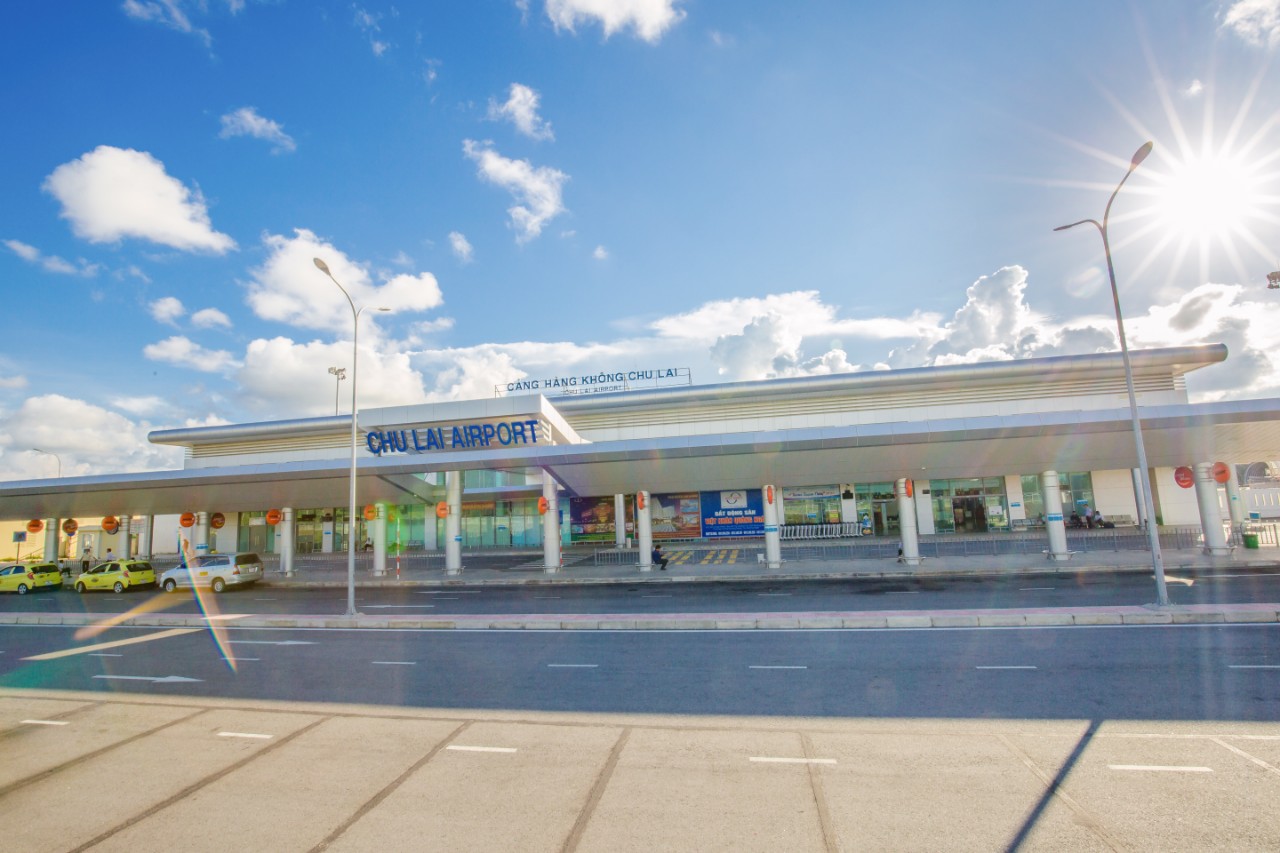 In the Central Highlands, Pleiku (PXU) and Buon Ma Thuot (BMV) are domestic routes to Hanoi and Ho Chi Minh City, allowing visitors to visit coffee plantations, waterfalls and ethnic cultures.
In the Central Highlands, Pleiku (PXU) and Buon Ma Thuot (BMV) are domestic routes to Hanoi and Ho Chi Minh City, allowing visitors to visit coffee plantations, waterfalls and ethnic cultures.
2.3. Southern Vietnam Airports
Southern Vietnam is home to some of the busiest and most touristy airports, connecting Ho Chi Minh City, the Mekong Delta and world famous beach destinations. On the Vietnam airport map, the region is the main gateway for international visitors and leisure travelers. Tan Son Nhat International Airport (SGN – Ho Chi Minh City): The busiest of all Vietnam airports, Tan Son Nhat handles over 40 million passengers annually and serves as the country’s largest hub. Just 8 km from downtown, it offers extensive domestic flights (Hanoi, Da Nang, Hue, Nha Trang, Phu Quoc) and long haul routes to Europe, the Middle East, Australia, and North America. For travelers, SGN is the main Vietnam airport, ideal for both city exploration and onward connections.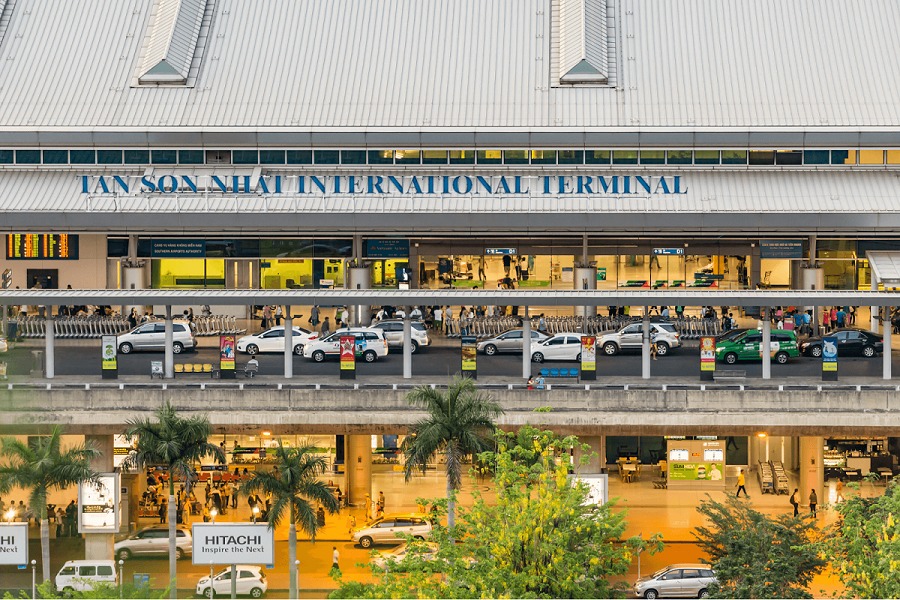 Can Tho International Airport (VCA): Located in the heart of the Mekong Delta, VCA plays an important role on the Vietnam airport map, serving visitors who want to experience floating markets, river cruises and eco-tours. Although smaller in scale, the airport still connects to Hanoi, Da Nang and offers seasonal international flights to Thailand and South Korea.
Can Tho International Airport (VCA): Located in the heart of the Mekong Delta, VCA plays an important role on the Vietnam airport map, serving visitors who want to experience floating markets, river cruises and eco-tours. Although smaller in scale, the airport still connects to Hanoi, Da Nang and offers seasonal international flights to Thailand and South Korea.
 Phu Quoc International Airport (PQC – Kien Giang): One of the fastest growing airports in Vietnam, PQC connects travelers directly to Vietnam’s most popular island. With millions of passengers each year, the airport serves both domestic and international flights (China, Korea, Thailand, Singapore, Malaysia). This airport eliminates the need for transit through Ho Chi Minh City, making Phu Quoc a destination in itself.
Phu Quoc International Airport (PQC – Kien Giang): One of the fastest growing airports in Vietnam, PQC connects travelers directly to Vietnam’s most popular island. With millions of passengers each year, the airport serves both domestic and international flights (China, Korea, Thailand, Singapore, Malaysia). This airport eliminates the need for transit through Ho Chi Minh City, making Phu Quoc a destination in itself.
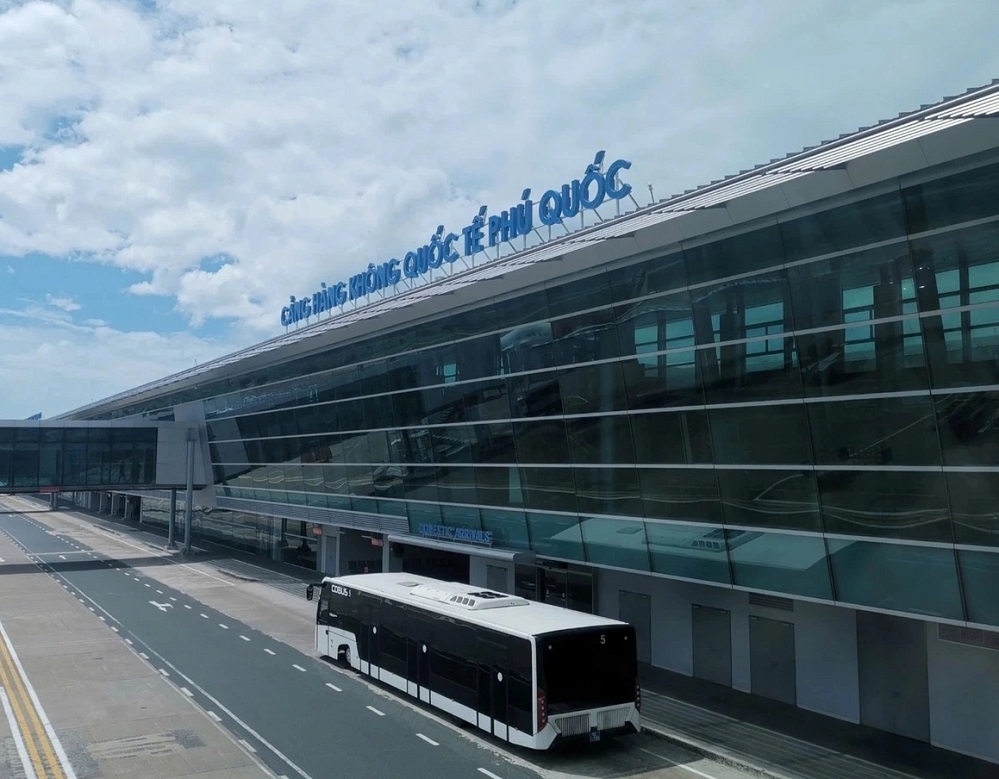 Cam Ranh International Airport (CXR): Serving Nha Trang, Cam Ranh welcomes more than 10 million passengers each year and is the leading gateway on the Vietnam airport map. The airport connects beach-loving tourists, especially from Russia, Korea and China, to Khanh Hoa’s resorts with modern, international-standard terminals.
Cam Ranh International Airport (CXR): Serving Nha Trang, Cam Ranh welcomes more than 10 million passengers each year and is the leading gateway on the Vietnam airport map. The airport connects beach-loving tourists, especially from Russia, Korea and China, to Khanh Hoa’s resorts with modern, international-standard terminals.
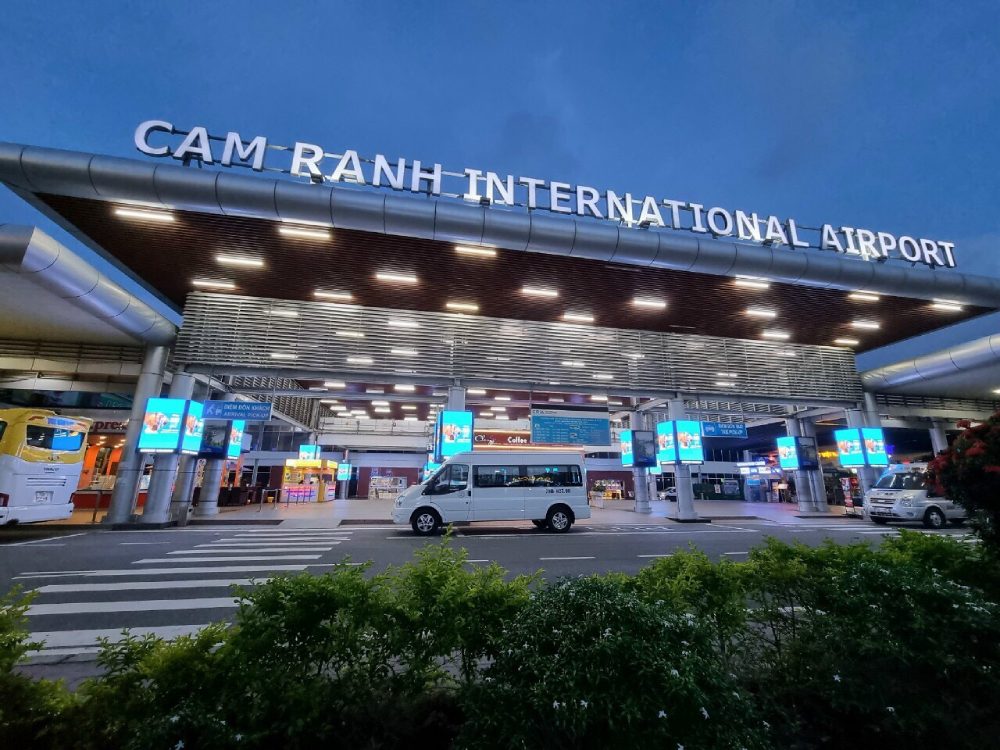 Con Dao Airport (VCS – Ba Ria – Vung Tau): Smaller than major hubs, VCS has a short runway for turboprop aircraft but plays a vital role in Vietnam airports for tourists. It provides direct access to the Con Dao Islands, famous for pristine beaches, diving, and history, with flights mainly from Ho Chi Minh City and Can Tho.
Con Dao Airport (VCS – Ba Ria – Vung Tau): Smaller than major hubs, VCS has a short runway for turboprop aircraft but plays a vital role in Vietnam airports for tourists. It provides direct access to the Con Dao Islands, famous for pristine beaches, diving, and history, with flights mainly from Ho Chi Minh City and Can Tho.
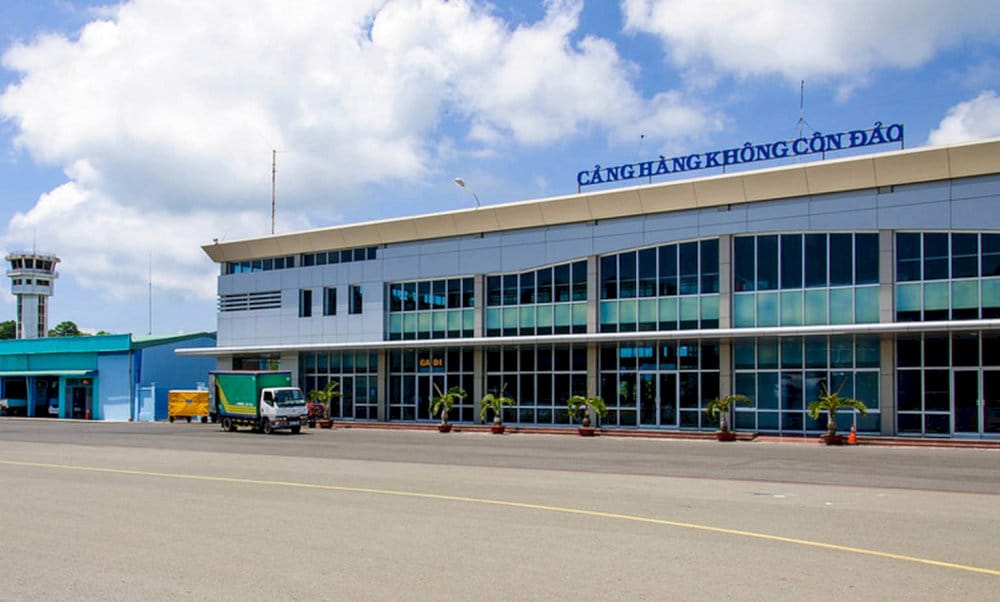
3. Tips Vietnam Airport for Tourist
Getting around Vietnam’s airports is generally quite easy, thanks to heavy investment in upgrading terminals and passenger services. However, first time tourists to Vietnam should familiarize themselves with Vietnam’s airport map, regulations and transportation options to make their journey more convenient. Here are detailed tips for getting around Vietnam’s most important airports for travelers:3.1. Visa and Immigration Procedures
At major Vietnam airports (Noi Bai – Hanoi, Tan Son Nhat – Ho Chi Minh City, Da Nang, Cam Ranh), tourists can enter with either an e-visa, visa exemption, or visa on arrival (VOA). Since August 2023, e-visas are available for all nationalities, valid up to 90 days, single or multiple entry. For VOA, travelers must have a pre-approval letter, passport (valid 6+ months), entry form, photos, and pay a cash stamping fee (USD or VND) upon arrival. Note: not all airports support VOA. With an e-visa, simply present the printed/digital visa and passport at immigration for stamping. Queues can be long at Tan Son Nhat and Noi Bai, so prepare documents in advance.3.2. Transportation and Transfers
The Vietnam airport map shows that many airports are located outside city centers: Noi Bai is 30 km from Hanoi, Van Don is 50 km from Ha Long Bay, and Cam Ranh is 35 km from Nha Trang. Reliable options include: Ride-hailing apps (Grab, Be, Gojek): Safe and transparent pricing at most urban airports. Airport buses & shuttles: Available at Noi Bai, Da Nang, Cam Ranh, and Van Don. Shuttle buses are often cheaper but less flexible. Airport taxis: Widely available, but agree on price or ensure the meter is on. For first-time visitors, airport counters (Mai Linh, Vinasun) are recommended.
>>>> Explore how to book a taxi from Hanoi airport to Old Quarter in our blog!
Reliable options include: Ride-hailing apps (Grab, Be, Gojek): Safe and transparent pricing at most urban airports. Airport buses & shuttles: Available at Noi Bai, Da Nang, Cam Ranh, and Van Don. Shuttle buses are often cheaper but less flexible. Airport taxis: Widely available, but agree on price or ensure the meter is on. For first-time visitors, airport counters (Mai Linh, Vinasun) are recommended.
>>>> Explore how to book a taxi from Hanoi airport to Old Quarter in our blog!
3.3. Currency Exchange and Payment
Currency exchange counters at Vietnamese airports are convenient but often less convenient than those in the city center. Travelers should exchange a small amount of money (about 1-2 million VND) to pay for taxis and meals, then withdraw more money at ATMs in the city center. Most Vietnamese tourist airports (HAN, SGN, DAD, PQC) have ATMs inside the arrivals hall, but smaller airports such as Con Dao (VCS) may have limited banking services, so prepare cash in advance. Electronic payments and e-wallets (Momo, ZaloPay) are becoming more popular at airports.3.4. Baggage and Security
Domestic airlines (Vietnam Airlines, VietJet, Bamboo Airways) enforce strict baggage rules. Standard allowance is 7 kg for carry on and 20 kg for check-in, but low-cost carriers often charge extra for checked bags. Security at Vietnam airports is thorough, removing power banks, liquids, and electronics. For connecting flights, remember that domestic security checks are repeated even after international arrivals.3.5. Facilities and services
Vietnam’s major airports (SGN, HAN, DAD, CXR, PQC) have modern terminals with duty free shops, cafes, food courts and lounges. Many airports now have sleeping pods, luggage storage and children’s areas. Smaller airports (Con Dao, Dien Bien, Pleiku) have limited services. It’s best to bring water and snacks. SIM cards and 4G packages from Viettel, Mobifone and Vinaphone are sold in the arrivals hall and are often cheaper than international roaming.3.6. Connectivity and Wi-Fi
Most Vietnam airports for tourists provide free Wi-Fi, but the quality varies. Noi Bai and Tan Son Nhat offer stable connections with SMS verification, while other airports may have slower service. Tourists are advised to purchase a local SIM card at arrival for reliable internet throughout the trip.3.7. Weather and Delays
The Vietnam airport map shows airports spread across a variety of climate zones. Northern airports such as Dien Bien and Van Don can experience fog or storms in the winter, while central airports such as Da Nang and Chu Lai are frequently disrupted by storms from August to October. Always allow extra time for connecting flights, especially if travelling during the rainy season.CONCLUSION
Vietnam’s airport network, from major hubs like Noi Bai, Tan Son Nhat and Da Nang to regional gateways like Van Don, Phu Quoc and Con Dao, makes getting to and from Vietnam easy for both international and domestic travelers. By understanding Vietnam’s airport map, visa requirements, transportation options and local tips, travelers can enjoy a smoother arrival and departure when exploring Vietnam.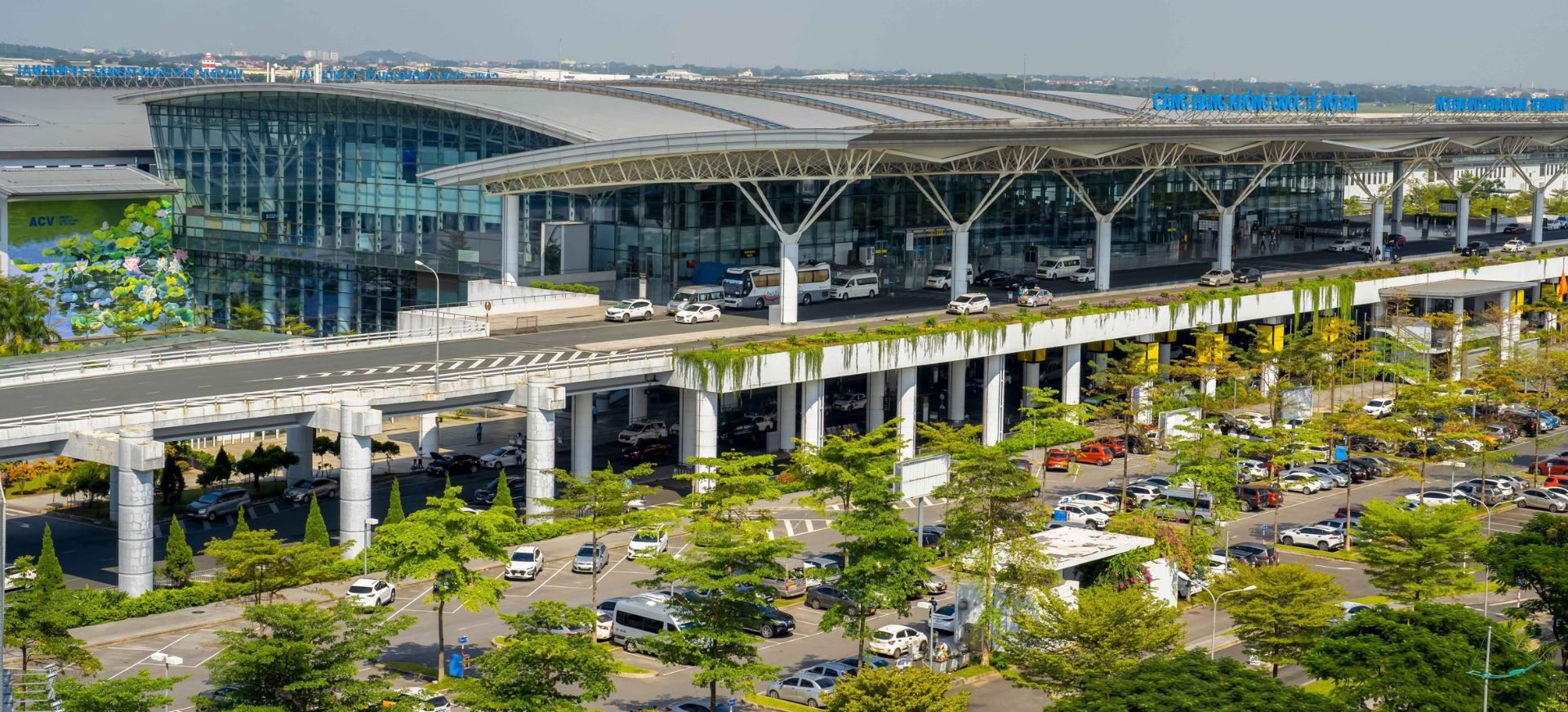 For those who want more than just a trip, YESD Travel offers authentic sustainable travel experiences and community engagement. The YESD team will provide specific instructions for travelers to easily navigate through Vietnam airports. YESD tours are not just about sightseeing but also about exploring meaningful journeys, connecting travelers with local people, traditions and landscapes in a responsible way.
For those who want more than just a trip, YESD Travel offers authentic sustainable travel experiences and community engagement. The YESD team will provide specific instructions for travelers to easily navigate through Vietnam airports. YESD tours are not just about sightseeing but also about exploring meaningful journeys, connecting travelers with local people, traditions and landscapes in a responsible way.
